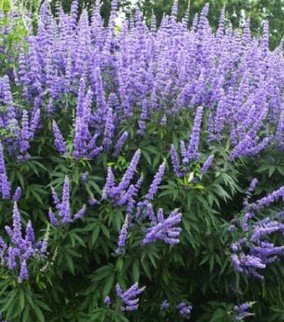Chaste Tree

Did you know?
Chaste Trees (Vitex agnus-castus) were historically thought to have anaphrodisiac properties, which is how they acquired their common name. Although this has since been proven untrue, there are other medical benefits of consuming the fruits, such as reducing the symptoms of fibrocystic disease.
Size
Up to 10 feet tall and 8 feet wide
Flowers, Fruit, Foliage
Panicles of pale purple flowers bloom from late spring through early autumn on new wood. The fruit are small, red-black drupes. Palmately compound, aromatic leaves have up to 7 lanceolate leaflets that grow to be up to 6 inches long.
Pests & Diseases
None serious
Landscape Use
Great for borders, foundation plantings, and in butterfly gardens
Care Practices
Plant in moist, well-drained soil in an area with full sun. These small trees tolerate salinity and high temperatures, but they are not cold hardy and should be pruned to within 1 foot of the ground in early spring.
Native Range
Southern Europe and western Asia





